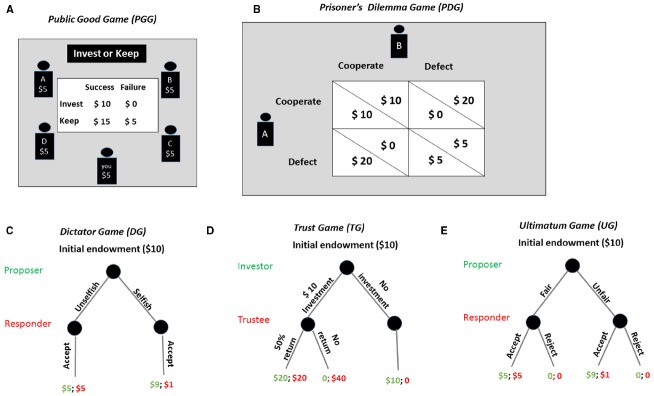FIGURE 1.

Strategic decision making tasks. (A) The public good game. In this task, subjects are given an amount of money, and they can decide how much to contribute to a common pool. The money contributed would be doubled and split evenly among the group members. (B) The prisoner’s dilemma game. The players each choose to either cooperate or defect with their opponent. Each player’s payoff depends on the interaction of the two choices. For example, the player A can get the largest payoff if he chooses to defect and player B chooses to cooperate, while the worst outcome occurs when he decides to cooperate but his partner defects. (C) The dictator game. The proposer determines a split of a certain endowment. The responder simply accepts the proposal. (D) The trust game. The investor decides whether or not to invest and how much of the endowment to invest with the trustee. The investment will be multiplied. The trustee is free to return any amount of the increased investment back to the investor; or he can keep all of the increased investment. (E) The ultimatum game. The proposer provides a proposal how to divide the money between the two while the responder has the option of accepting or rejecting the offer. If the responder accepts the offer, they both get the money as proposed; however, if the responder rejects the offer, neither player receives anything.
